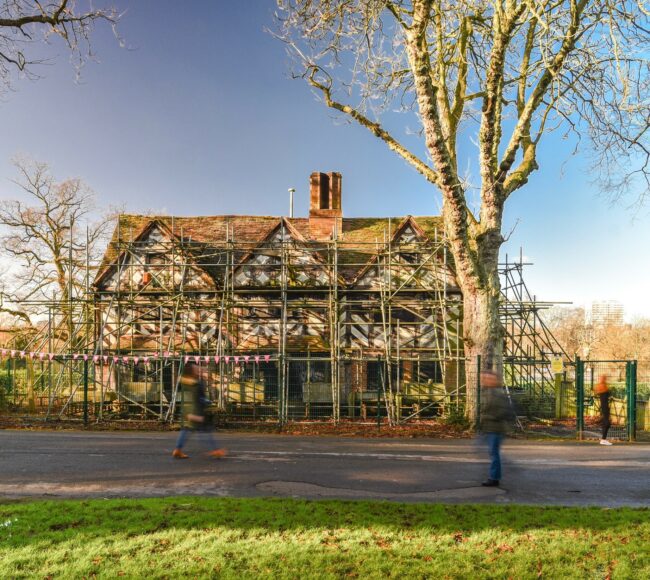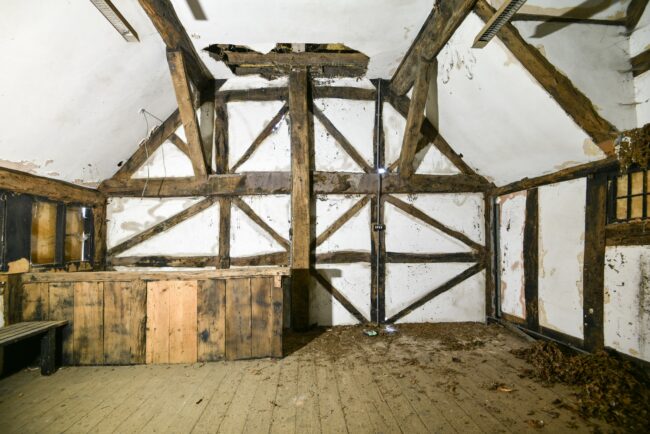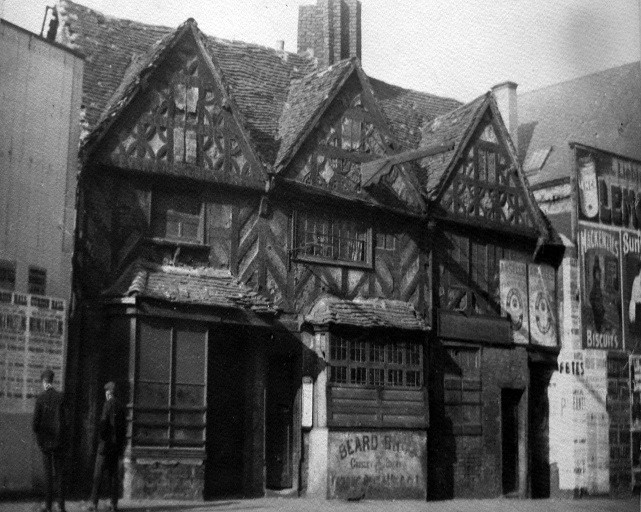An update on Birmingham Conservation Trust: The Golden Lion
Birmingham Conservation Trust (BCT) is a building preservation trust, which means that it’s an organisation whose main aims include the preservation and regeneration of historic buildings.
That’s exactly what it did with the Coffin Works back in 2024; it was brought it back to life by finding a new use for it as a museum. While BCT previously sold the buildings it regenerated (as with the Birmingham Back-to-Backs, selling them to the National Trust) this time it decided to keep the flagship Coffin Works and run it instead. We changed our business model and with that came some challenges.

The Golden Lion, Cannon Hill Park, January 2024. ©Birmingham Conservation Trust.
While it’s not easy finding money to regenerate old buildings, it’s often underestimated how challenging it is to run that building and turn it into a successful enterprise after its restored. That’s what we discovered with the Coffin Works and while we focussed on making it a self-sustaining business, this meant that BCT had to take a back seat.
But now we’re really pleased to say that BCT is back and we’re in a good position to take on new projects, well one project at a time! And our latest project is the Golden Lion in Cannon Hill Park.
A bit of history on the Golden Lion
The Golden Lion was built in the 16th century and once stood on Deritend High Street.
It’s believed that it was constructed sometime between 1570 and 1590, as the guildhall or associated building for the Chapel of St John, Deritend. We’re not entirely sure of its original purpose, but from the 1730s we first find documented evidence of it becoming an ‘inn’ and it continued as a public house until the 1890s.

Interior shot of the first floor inside the Golden Lion. Photo taken 26th January 2024. ©Birmingham Conservation Trust.
It was bought in 1853 by Birmingham Solicitor, Thomas Simcox and at that point was described as ‘the interesting, but dilapidated old structure.’
Nevertheless, it continued as a public house until the 1890s when the trail starts to go cold. Its history until 1910 is less well documented. It’s at this stage that history repeats itself, as residents of Birmingham we’re campaigning for the same outcome that we’re fighting for over 100 years later: to not lose this piece of ‘old Birmingham’.
From 1909 there appears to have been a movement to save the Golden Lion from demolition. Indeed a letter sent to the ‘editors of the Birmingham Daily Post’ criticises the poor efforts of town councillors for allowing the ‘relic of old Brum’ to be left to wrack and ruin:
“it is a strange view on the commentary our councillors hold of their duties that…a hundred or two is grudged to preserve a unique specimen of our forefathers’ consummate taste and skill that would delight many succeeding generations and do themselves perpetual honour.”
The Golden Lion was saved from demolition on account of the efforts of the Birmingham and Warwickshire Archaeological Society who subsequently paid for it to be moved to Cannon Hill Park in 1911.
Not only is it a remarkable survival of a timber-framed building from the city centre, it’s also a pioneering example of saving a building through relocation.

The Golden Lion in circa 1910. ©Birmingham Daily Post
Following its reconstruction in Cannon Hill Park the Golden Lion was for many years used as a cricket pavilion. Sadly, the building has been empty and unused for well over 20 years and so for the second time in its history it is at risk of destruction.
What do we hope to do?
Birmingham Conservation Trust is working with a range of partners to secure the future of the building. Thanks to grants from Historic England, the W.A.Cadbury Charitable Trust and Architectural Heritage Fund, the first phase of the project will start in spring 2024. This phase will involve a detailed feasibility study to assess the condition of the building and to establish the cost of repairs to enable it to be brought back into use.
Once we have all of this information we will be in a far better position to progress a full restoration project. If we are able to secure the necessary funding through grants and donations, it is hoped that restoration work on site will start in 2025.
Look out for blogs coming soon!
Sarah Hayes Museum Director



Good Luck! It’s a terrific building. Looking forward to seeing it come back to life.